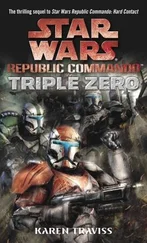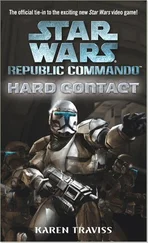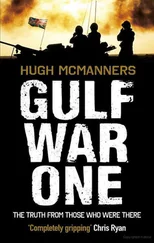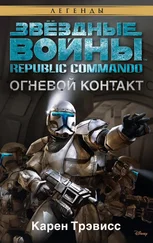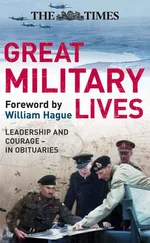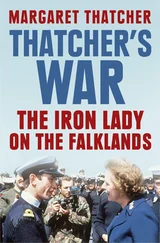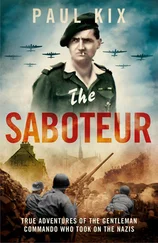Hugh McManners - Falklands Commando
Здесь есть возможность читать онлайн «Hugh McManners - Falklands Commando» весь текст электронной книги совершенно бесплатно (целиком полную версию без сокращений). В некоторых случаях можно слушать аудио, скачать через торрент в формате fb2 и присутствует краткое содержание. Город: London, Год выпуска: 2014, ISBN: 2014, Издательство: Nightstrike Publishing, Жанр: nonf_military, Биографии и Мемуары, на английском языке. Описание произведения, (предисловие) а так же отзывы посетителей доступны на портале библиотеки ЛибКат.
- Название:Falklands Commando
- Автор:
- Издательство:Nightstrike Publishing
- Жанр:
- Год:2014
- Город:London
- ISBN:978-0-992-81540-0
- Рейтинг книги:4 / 5. Голосов: 1
-
Избранное:Добавить в избранное
- Отзывы:
-
Ваша оценка:
- 80
- 1
- 2
- 3
- 4
- 5
Falklands Commando: краткое содержание, описание и аннотация
Предлагаем к чтению аннотацию, описание, краткое содержание или предисловие (зависит от того, что написал сам автор книги «Falklands Commando»). Если вы не нашли необходимую информацию о книге — напишите в комментариях, мы постараемся отыскать её.
Falklands Commando — читать онлайн бесплатно полную книгу (весь текст) целиком
Ниже представлен текст книги, разбитый по страницам. Система сохранения места последней прочитанной страницы, позволяет с удобством читать онлайн бесплатно книгу «Falklands Commando», без необходимости каждый раз заново искать на чём Вы остановились. Поставьте закладку, и сможете в любой момент перейти на страницу, на которой закончили чтение.
Интервал:
Закладка:
There’s no doubt that we were pushing our luck with such a heavily loaded boat in such poor sea conditions. Afterwards, Pete Beavers said if this had been an exercise he was running in Poole with the full peacetime safety back-up, he would have called it off simply because of the bad weather. But because everyone did their best and were well prepared, it came off.
And when the results came through via GCHQ, all our efforts were proved to have been very worthwhile indeed.
Part of my debriefing process was with the Force’s top-secret signals Intelligence Office, manned by spooks from GCHQ, who were able to gather information from Argentine military radio transmissions. Argentine military reports back to Buenos Aires revealed we’d done quite a bit of damage to the fuel dump and ammunition storage sites. Three officers had been killed, they didn’t bother with the numbers of ordinary soldiers killed or wounded.
During the questioning of prisoners at the end of the campaign, it was also discovered that the Commanding Officer of the Fox Bay battalion shot himself on the night of our bombardment. Had he known the problems we were having so very close to his own trenches, he might not have taken it so badly… Tragic perhaps, but our sense of black-tinged sense of humour saw only the irony.
We made it back on to Intrepid later that day (26 May). I heaved all my kit from the flight deck and up through the usual hatches and ladders once more to the wardroom flat, this time without the risk of incineration by Sea Cat. After a coffee, or more likely it was a beer, I went up to the Amphibious Operations Room to collect any signals that might have come in for me, and to see how the war was going.
Meanwhile Nick Allin (the other half of FO1) was planning a raid similar to Fox Bay but on Port Howard, the settlement to the north. I’d lost track of them once their planning got under way and I went off to Fox Bay, they having been initially warned off for the operation on 23 May, at the same time as me.
After the excitement of our adventure, Sergeant Pete York of 8 SBS, who was in charge of Nick’s insertion, had decided to take two boats, and rather than relying on anyone else’s craft, despite the logistic complication of boating across to Yarmouth , to use two SBS Gemini assault boats. Their original intention was to go in and stay ashore for five days, but eventually simplicity overcame the complexities of the longer operation, and as I had done they decided on a similar one-night operation.
Nick delayed 24 hours in order to debrief an SAS patrol that was returning after several weeks hiding in the area of Port Howard. They then transferred from Intrepid to HMS Yarmouth . The full team was Nick Allin, Des Nixon, Pete York and five SBS Marines: two coxswains, plus three others in case they had to fight their way out.
Port Howard Raid Map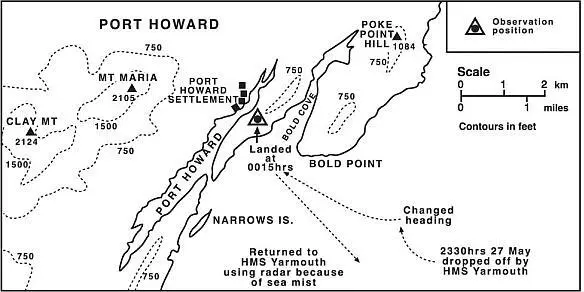
At this point I’ll let Nick tell it in his own words:
On HMS Yarmouth , we sailed late from Bomb Alley at about 2100 hours (on 27 May) due to air attacks from enemy aircraft. We arrived at our drop-off point, which was 3½ kilometres south-west of Bold Point at about 2330. In total darkness we launched the two Geminis and made our way to the east of Bold Point, scanning the area with the thermal imager and with the image intensifiers to check for the enemy – nothing was sighted.
From there we took a bearing north-east to get our landing place, which was a little sheltered rock cove on the seaward side, all the time checking for enemy movement. We landed at 0015, secured the area and gave a radio check to the ship and were ‘fives’ both ways.
Then we made our way to our pre-arranged observation position taking great care walking up the hill to that location. We sent the machine-gun team to cover the northeast and we covered the southwest. I established comms with Yarmouth and informed them that we were ready. After a short delay due to the ship turning around, at 0130 we started engaging targets from our prearranged fire-plan that I had given to Sergeant-Major Richards, our liaison officer on the ship.
The first target was some tent positions and troops dug into trenches. We then shifted the shellfire onto an anti-aircraft position and store. The last target was the enemy headquarters. While firing again at the first target we came under fire from a gun battery. Its fire after a bit became quite indiscriminate, going over our heads, possibly aiming at the ship. Low-lying mist in the Port Howard area made visibility bad.
Nick was still firing at another target when the team came under artillery shellfire. Des Nixon had seen flashes earlier on, and when the mist closed in, had plotted the location. Des was able to produce the co-ordinates of where the gun battery was hidden:
This gun battery was about 1,000 metres southwest of the enemy Headquarters. I gave a correction from that, and the shells landed a bit short. Once the shells were falling in the target area I covered all along the ridge because the guns were spread out across about 500 metres. Using VT and covering the area very comprehensively we heard nothing more from the guns. We fired about 297 salvoes altogether, which covered the target area.
We left the observation point and made our way back to the Geminis very carefully, just in case. We started the engines and headed back out to sea to the ship – on a compass heading as the mist had become very bad. We had to get on the radio and use the ship’s radar to guide us the last bit.
On our return we had a debrief and sorted out a few problems. Afterwards we had a good breakfast and got our heads down.
The radio intercept messages that we saw when we got back to Intrepid said that there were two officers dead, two wounded, with two houses and a storeroom damaged.
With a heavy sea mist, the weather was quite calm in comparison with the two nights earlier at Fox Bay. Nick’s operation was a textbook version of what I had been trying to achieve at Fox Bay, and could not have gone better.
Chapter 9. Survival
Before joining the Army, I’d assumed modern technology would have improved the soldier’s lot. Apocalyptic First World War scenes of mud, water and cold in the trenches, men soaking wet for weeks on end in the Crimea, and epic paintings of armies of men huddled in cloaks trying to sleep on open ground the night before a battle. This was historical – these privations were things of the past… surely?
When I arrived at the Royal Military Academy Sandhurst in 1971, naïve and young, I’d been surprised to be taught to dig trenches. Surely modern warfare had progressed beyond that? They had to be deep enough to stand with just your head over the parapet, two feet wide and two metres long, plus an underground space for one person to sleep under the claustrophobic protection of two feet of earth overhead. We were ‘taught’ to de-turf a huge area then dig fast, spreading the excavation spoil, then turfing and camouflaging to blend with the rest of the hillside. With night patrols to test our navigation, endurance and leadership, and to develop our capacity to go without sleep, we lived for weeks (I cannot say happily) in these soggy, muddy holes.
Trenches remain the only (and cheapest) protection from shell and mortar fire, one of the peculiar and inescapable norms (the lowest common denominator perhaps) of military life. Someone else has summed up Sandhurst exercises, I think very accurately, as “The endless march to the undug trench….”
The chapter following this one describes Operation Brewers Arms, which became, apart from anything else, an exercise in survival. We had to vanish by day into gently rolling, bare-arsed moorland, which was completely waterlogged. So before I proceed with that, I’d like to explain how you live when soaking wet, freezing cold, unable to move in daylight, with very little food. Indeed, this is the backdrop to everything in this book.
Читать дальшеИнтервал:
Закладка:
Похожие книги на «Falklands Commando»
Представляем Вашему вниманию похожие книги на «Falklands Commando» списком для выбора. Мы отобрали схожую по названию и смыслу литературу в надежде предоставить читателям больше вариантов отыскать новые, интересные, ещё непрочитанные произведения.
Обсуждение, отзывы о книге «Falklands Commando» и просто собственные мнения читателей. Оставьте ваши комментарии, напишите, что Вы думаете о произведении, его смысле или главных героях. Укажите что конкретно понравилось, а что нет, и почему Вы так считаете.

